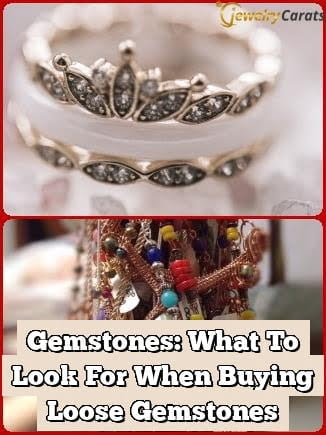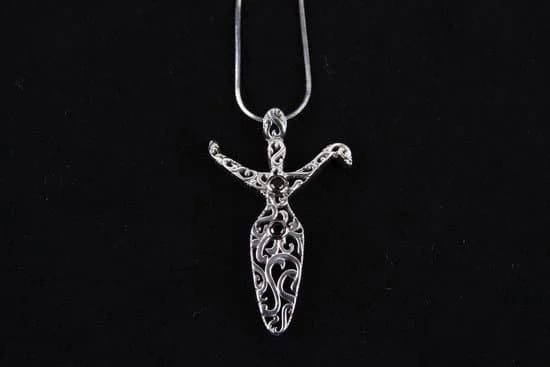Gemstones have long been cherished for their beauty and rarity, making them a popular choice in jewelry design. However, incorporating gemstones into jewelry requires more than just finding the perfect stone. It often involves drilling through the gemstone to create holes for various purposes, such as stringing beads or attaching pendants.
The process of drilling gemstones requires precision and care to ensure that the stone remains intact and undamaged. In this article, we will explore the art of drilling gemstones for jewelry and provide you with all the necessary knowledge and techniques to get started on your own projects.
Before diving into the world of drilling gemstones, it is important to understand why this skill is essential in jewelry making. Drilling allows for greater versatility in jewelry design by offering new possibilities for attaching components or creating unique designs that showcase different shapes and sizes of gemstones. By learning how to drill gemstones properly, you can transform a simple stone into a focal point of a piece or enhance its overall aesthetic.
However, drilling gemstones requires careful consideration and preparation. One must take into account various factors such as the type of gemstone, its hardness level, and even its inherent characteristics before embarking on the task. Improper drilling techniques can result in fractured stones or compromised integrity, rendering them useless for jewelry making purposes. Therefore, it is crucial to equip yourself with the right knowledge and tools before attempting to drill gemstones.
In this article, we will guide you through all aspects of drilling gemstones for jewelry making. We will explore different types of gemstones used in jewelry and how their unique qualities can affect the drilling process. Additionally, we will delve into selecting appropriate drill bits based on gemstone types and hardness levels.
We will also provide detailed information on essential tools needed for successful drilling while emphasizing safety precautions you should always follow. So let us begin this exciting journey into the world of drilling gemstones.
Understanding the Different Types of Gemstones
Gemstones used in jewelry come in a wide variety of types, each with its own unique qualities and characteristics. These variations can significantly impact the drilling process when it comes to creating beautiful gemstone jewelry. Understanding the different types of gemstones and their properties is essential for successful drilling.
One of the key factors to consider when drilling gemstones is their hardness. Gemstones are ranked on the Mohs scale of hardness, which measures a mineral’s ability to resist scratching. For example, diamonds rank at the top of the scale with a hardness of 10, while softer gemstones like pearls have a lower ranking.
When drilling harder gemstones such as diamonds or sapphires, it is crucial to use drill bits made of strong materials that can withstand the pressure. Diamond-coated drill bits are often recommended for these types of stones due to their toughness and longevity. On the other hand, softer gemstones may require more delicate drill bits made from materials like tungsten carbide or corundum.
Another characteristic to consider is a gemstone’s transparency. Some gemstones, like amethyst or emerald, may have internal inclusions or fractures that can affect their durability during drilling. Care must be taken not to apply excessive force or excessive pressure on these areas, as it could result in damage or breakage.
To understand how specific gemstone characteristics can affect the drilling process, it is essential to research each stone before beginning any drilling project. By familiarizing yourself with information about each type of gemstone’s hardness and transparency levels, you can select appropriate techniques and tools tailored to your specific projects.
When dealing with different types of gemstones, it’s important to approach each one uniquely since they all have distinct qualities that will determine the success of your drilling efforts. By considering factors such as hardness and transparency, you can ensure clean and precise holes while preserving the integrity of the stone during the drilling process.
Choosing the Right Drill Bits
Choosing the right drill bits for drilling gemstones is essential to ensure clean and precise holes without damaging the stones. Different types of gemstones have varying hardness levels, which require specific drill bits for optimal results. Here is a comprehensive guide to help you select the appropriate drill bits for different gemstone types and hardness levels.
Diamond Drill Bits
Diamond drill bits are the most commonly used for drilling gemstones due to their superior hardness and durability. They can effectively drill through all types of gemstones, including diamonds themselves. Diamond drill bits come in various sizes, allowing you to choose a bit that matches the diameter you desire for your hole.
High-Speed Steel Drill Bits
High-speed steel (HSS) drill bits are suitable for drilling softer gemstones like pearls, opals, or coral. These gems have lower hardness levels compared to diamonds or rubies. HSS drill bits are versatile and can also be used on other materials like metals or plastics.
Tungsten Carbide Drill Bits
Tungsten carbide drill bits are ideal for drilling harder gemstones such as quartz, sapphires, or rubies. These drill bits are highly durable and can withstand the toughness of these stones without breaking easily. Tungsten carbide is known for its heat resistance, ensuring that temperatures generated during drilling won’t damage the stone.
Safety Considerations
Before starting any drilling project, it is crucial to prioritize safety. Always wear protective eyewear and gloves to protect yourself from any potential injuries or accidents. Additionally, work in a well-ventilated area or use respiratory protection when working with materials that produce dust or fumes.
When using diamond-coated drills or other highly abrasive options like tungsten carbide, it’s essential to take breaks during prolonged drilling sessions to prevent overheating and extending the lifespan of the drill bits.
By understanding the different types of drill bits and their suitability for specific gemstones, you can ensure a successful drilling process while preserving the integrity and beauty of your gemstones. Remember to always start with a small pilot hole before using larger bits, as this helps to prevent any potential cracking or damage to the gemstone during drilling.
Essential Tools and Equipment
When it comes to drilling gemstones for jewelry, having the right tools and equipment is essential. Without proper tools, the drilling process can be difficult and even result in damage to the gemstone. This section will provide a detailed overview of the necessary tools and equipment needed for drilling gemstones and offer important safety precautions to keep in mind.
One of the most important tools you’ll need is a drill. While there are various options available, it’s recommended to use a rotary tool or a flex shaft machine with a small handpiece attachment. These tools give you better control and precision when drilling gemstones.
Additionally, you’ll need different types of drill bits depending on the hardness of the gemstone. Diamond-coated drill bits are typically used for harder gemstones like diamonds, while carbide or tungsten bits are suitable for softer gemstones.
In addition to a drill and appropriate drill bits, you’ll also need some other essential tools. A stable work surface is important to hold your gemstone securely while drilling. A clamp or vice can help secure your gemstone in place during the drilling process.
Safety goggles should always be worn to protect your eyes from any debris that may occur during drilling. It’s also advisable to have a dust mask on hand as well as ear protection if using a noisy rotary tool.
Safety precautions are crucial when working with power tools. Always read the manufacturer’s instructions before using any equipment, and wear appropriate clothing that won’t get tangled in the machinery. Ensure that your work area is well-ventilated to prevent inhalation of dust particles created during drilling. Take frequent breaks if needed, as extended periods of drilling can cause fatigue or decrease focus, potentially leading to accidents.
By having all the necessary tools and following safety precautions, you’ll be ready to begin your journey into drilling gemstones for jewelry creation. With these tools in hand, you can proceed with confidence knowing that you have everything needed for a successful drilling experience.
Techniques for Ensuring Clean and Precise Drilling
When drilling gemstones for jewelry, it is important to follow certain techniques to ensure clean and precise results without damaging the stone or compromising its integrity. Here are step-by-step instructions on how to achieve this:
- Prepare the Gemstone: Before starting the drilling process, make sure to clean the gemstone thoroughly with warm soapy water and a soft brush. This will remove any dirt or debris that could interfere with the drilling.
- Mark the Drilling Point: Use a fine-tipped permanent marker to mark the exact spot where you want to drill. This will serve as a guide and help you maintain accuracy during the drilling process.
- Secure the Gemstone: It is crucial to have a stable and secure base for your gemstone while drilling. Place the gemstone on a wooden block or use a specialized jewelry vise to hold it firmly in place.
- Choose the Right Drill Bit: Select a drill bit that matches both the type of gemstone you are working with and its hardness level. For softer stones like opal or turquoise, use diamond-tipped bits, while for harder stones like sapphire or ruby, use carbide-tipped bits.
- Apply Lubrication: To prevent overheating and prolong the life of your drill bit, apply lubrication such as water or mineral oil directly onto the drilling area. This will also help flush away debris as you drill.
- Start Drilling: Hold your drill perpendicular to the marked spot on the gemstone, exerting gentle but consistent pressure. Begin drilling at a slow speed, gradually increasing it as you progress deeper into the gemstone.
- Take Breaks and Cool Down: While drilling, make sure to take periodic breaks to allow both yourself and the gemstone to cool down. Overheating can cause damage to both the stone and your drill bit.
- Clean Away Debris: Throughout the drilling process, regularly clean away the debris and excess lubrication using a soft brush or compressed air. This will provide better visibility and prevent any buildup that could affect your drilling accuracy.
Following these step-by-step instructions will help you achieve clean and precise drilling results while ensuring the integrity of your gemstone. Remember to always prioritize safety by wearing appropriate eye protection and following manufacturer guidelines for your tools and equipment.
| Gemstone Hardness | Drill Bit Type |
|---|---|
| 1-3 (Soft) | Diamond-tipped Bits |
| 4-7 (Medium) | Carbide-tipped Bits |
| 8-10 (Hard) | Diamond-tipped Bits |
Tips for Dealing with Different Shapes and Sizes
When it comes to drilling gemstones for jewelry, one of the challenges that artisans often face is working with gemstones of different shapes and sizes. Each shape and size requires a unique approach and technique to ensure clean and precise drilling without compromising the integrity of the stone. In this section, we will explore some tips for dealing with different shapes and sizes of gemstones, from round cabochons to irregular cuts.
Round cabochons are frequently used in jewelry due to their classic appeal. When drilling round cabochons, it is essential to mark the center point accurately before beginning the drilling process. Using a center punch or a sharp needle, make a small indentation at the desired location.
This indentation will act as your guide when aligning the drill bit. Start drilling slowly while maintaining a steady hand, applying gentle but consistent pressure. Avoid using excessive force as it may lead to cracking or chipping of the stone.
On the other hand, irregularly shaped gemstones require special attention during the drilling process. Since these stones do not have symmetrical surfaces, it can be challenging to find an area suitable for drilling without risking damage. One technique is to use modeling clay or putty to create a stable base for supporting the stone during drilling.
Apply a small amount of putty on a flat surface and press down gently until it forms a stable mound. Place the irregular-shaped gemstone on top of the putty, ensuring that it sits securely before proceeding with drilling.
Another challenge when dealing with different shapes and sizes is determining how deep you want your hole to be drilled. This decision depends on various factors such as design requirements and intended use in jewelry making. It is vital to measure and mark the desired depth on your drill bit using masking tape or a permanent marker before starting to avoid accidentally drilling too far into the gemstone.
By following these tips and adapting your techniques according to each gemstone’s shape and size, you can overcome the challenges associated with drilling gemstones for jewelry. With practice and patience, you will become more proficient in handling various gemstone cuts, ensuring beautifully drilled stones that enhance the overall aesthetic of your jewelry designs.
Troubleshooting Common Issues
During the process of drilling gemstones for jewelry, it is not uncommon to encounter various issues that can hinder the progress or quality of the drilling. This section will address some of the common problems that may arise and offer solutions to overcome them.
One common problem during drilling is overheating. Gemstones are often delicate and susceptible to heat damage. Overheating can cause fractures, discoloration, or even shattering of the gemstone. To prevent overheating, it is crucial to use proper lubrication throughout the drilling process. This can be done by applying a small amount of water, oil, or coolant directly onto the drill bit and gemstone surface. The lubricant acts as a cooling agent that dissipates heat generated during drilling.
Another issue that may occur is vibrations during the drilling process. Vibrations can lead to inaccurate drilling and even breakage of the gemstone. To minimize vibrations, it is important to maintain a steady hand and apply consistent pressure while drilling. Using a clamp or securing the gemstone in place can also help stabilize it during drilling. Additionally, choosing the right drill bit with a suitable size and shape for the gemstone can reduce vibrations.
Drill bit breakage is another concern while drilling gemstones. Gemstones vary in hardness, and using an incorrect drill bit or excessive force can result in breakage or damage to both the drill bit and gemstone. To avoid this, make sure to select a drill bit specifically designed for use with gemstones and consider their hardness levels when choosing one. It is also important to use gentle pressure when drilling and avoid forcing the drill bit into the gemstone.
Polishing and Finishing the Drilled Gemstones
When it comes to drilling gemstones for jewelry, achieving a smooth and polished finish is essential for creating beautiful pieces. After successfully drilling the gemstone, the next step is to polish and finish it to enhance its overall appearance. This section will explore various methods for achieving that desired smooth and polished finish.
Polishing Techniques
There are several polishing techniques that can be used to achieve a professional-looking finish on drilled gemstones. One popular method is using a lapidary polishing wheel. These wheels are available in different grits, ranging from coarse to fine, allowing you to gradually smooth and polish the surface of the gemstone. Start with a coarser grit and work your way up to finer grits for a mirror-like shine.
Another technique is hand polishing, which involves using abrasive compounds or powders and applying them directly to the surface of the drilled gemstone. You can use a soft cloth or felt pad to gently rub the compound onto the stone, working in small circular motions until you achieve the desired level of polish. This method is ideal for smaller or irregularly shaped gemstones that may be difficult to polish with a larger lapidary wheel.
Polishing Materials
To achieve a smooth and polished finish, it’s important to choose the right polishing materials. Some commonly used materials include diamond paste, aluminum oxide powder, cerium oxide powder, and tin oxide powder. These compounds are available in different grades and can be applied directly onto your chosen polishing tool or mixed with water or oil as lubricants.
Additionally, felt or muslin buffs can be used in conjunction with these polishing compounds for an even more refined finish. These buffs can be mounted on a rotary tool or bench grinder and provide an extra level of shine when used correctly.
Whatever method or material you choose, be sure to take your time during the polishing process. It’s better to go slow and carefully monitor your progress to avoid over-polishing the gemstone and compromising its integrity.
Creative Ideas for Incorporating Drilled Gemstones in Jewelry Designs
Incorporating drilled gemstones into jewelry designs opens up a world of creative possibilities. From wire wrapping to bead embroidery, there are numerous techniques that can enhance the beauty of these gemstones and transform them into stunning pieces of jewelry. This section will explore some inspiring examples and unique ways to incorporate drilled gemstones into jewelry designs.
One popular technique for incorporating drilled gemstones is wire wrapping. This involves using thin wires, such as sterling silver or gold-filled wire, to create intricate designs around the gemstone. The wires can be twisted, coiled, or woven together to form beautiful patterns and secure the stone in place. Wire wrapped gemstones can be used as pendants, earrings, or even incorporated into bracelets and rings.
Bead embroidery is another technique that allows for creative expression with drilled gemstones. In this technique, seed beads, crystals, and other small beads are stitched onto a fabric backing surrounding the gemstone. The beads can be arranged in various patterns and colors to create a stunning frame for the stone. Bead embroidered gemstones can be used as focal points in necklaces or incorporated into earrings and brooches.
Using drilled gemstones as pendants is a classic and versatile way to showcase their beauty. A simple necklace chain or cord can be threaded through the drilled hole of the stone to create an elegant pendant. Drilled gemstone pendants can be worn on their own for a minimalist look or combined with other pendants for a layered effect.
| Technique | Example |
|---|---|
| Wire Wrapping |  |
| Bead Embroidery |  |
| Pendants |  |
These examples offer just a glimpse of the wide range of possibilities when it comes to incorporating drilled gemstones into jewelry designs. The key is to let your creativity guide you and experiment with different techniques to create unique and personalized pieces. Whether you choose wire wrapping, bead embroidery, or simply using gemstone pendants, the beauty of drilled gemstones can truly shine through in your jewelry creations.
Conclusion
In conclusion, drilling gemstones for jewelry is a skill that can open up endless possibilities for creativity and personal expression. By understanding the unique qualities of different gemstones and choosing the right drill bits, tools, and equipment, you can ensure clean and precise drilling without compromising the integrity of the stone. Additionally, troubleshooting common issues and learning different polishing techniques will help you achieve a smooth and polished finish on your drilled gemstones.
Drilling gemstones requires patience, practice, and attention to detail. It may take some time to master the techniques involved in drilling various shapes and sizes of gemstones. However, with perseverance and a willingness to experiment, you can create stunning pieces of jewelry that showcase your unique style.
Remember to always prioritize safety when working with power tools and take necessary precautions to prevent accidents or injuries. Use protective eyewear and gloves, work in a well-ventilated area, and follow manufacturer guidelines for each tool or equipment you use.
Finally, don’t forget to have fun throughout the process. The beauty of drilling gemstones lies not only in creating beautiful jewelry but also in discovering new ways to incorporate them into your designs. Whether it’s wire wrapping, bead embroidery, or using them as pendants, let your imagination run wild and let your newfound skills shine through.
So go ahead, dive into the world of drilling gemstones for jewelry with confidence. With this detailed guide at your disposal, there’s no limit to what you can create. Enjoy the journey of exploring different gemstone types, experimenting with techniques, and crafting personalized pieces that reflect your own unique style.
Frequently Asked Questions
What is the best drill bit for drilling gemstones?
When it comes to drilling gemstones, it’s important to choose the right drill bit that can effectively cut through the hard material without causing damage or breakage. The best drill bit for drilling gemstones is typically a diamond-coated or diamond-tipped drill bit.
Diamond is known for its exceptional hardness, making it ideal for cutting into tough materials like gemstones. These specialized drill bits are available in various sizes to accommodate different gemstone sizes and shapes, allowing jewelers and lapidaries to create precise holes without compromising the integrity of the stone.
What do you use to drill holes in gemstones?
To successfully drill holes in gemstones, a jeweler or lapidary would typically use a rotary tool equipped with a diamond-coated or diamond-tipped drill bit. This type of drill bit ensures efficient cutting action while minimizing the risk of cracking or chipping the gemstone.
The rotary tool provides the necessary power and control required for drilling into such hard materials. It is essential to secure the gemstone firmly in place during drilling, either by using a vise or clamp, to ensure stability and minimize vibrations that could potentially damage the stone.
Can you drill holes in crystals for jewelry?
Yes, it is possible to drill holes in crystals for jewelry purposes. Crystals such as quartz, amethyst, citrine, and many others can be drilled to create pendants, earrings, or other types of jewelry pieces. However, it is crucial to consider the specific crystal’s mineral properties before attempting to drill into it.
Some crystals may be more brittle than others and require extra caution during drilling to prevent them from shattering or fracturing. Using appropriate tools like diamond-coated or diamond-tipped drill bits designed for hard materials can help jewelers achieve clean and precise holes in crystals without compromising their structural integrity. Additionally, professionals skilled in lapidary techniques will have experience handling crystals and ensuring successful outcomes when drilling them for jewelry-making purposes

Welcome to my jewelry blog! My name is Sarah and I am the owner of this blog.
I love making jewelry and sharing my creations with others.
So whether you’re someone who loves wearing jewelry yourself or simply enjoys learning about it, be sure to check out my blog for insightful posts on everything related to this exciting topic!





